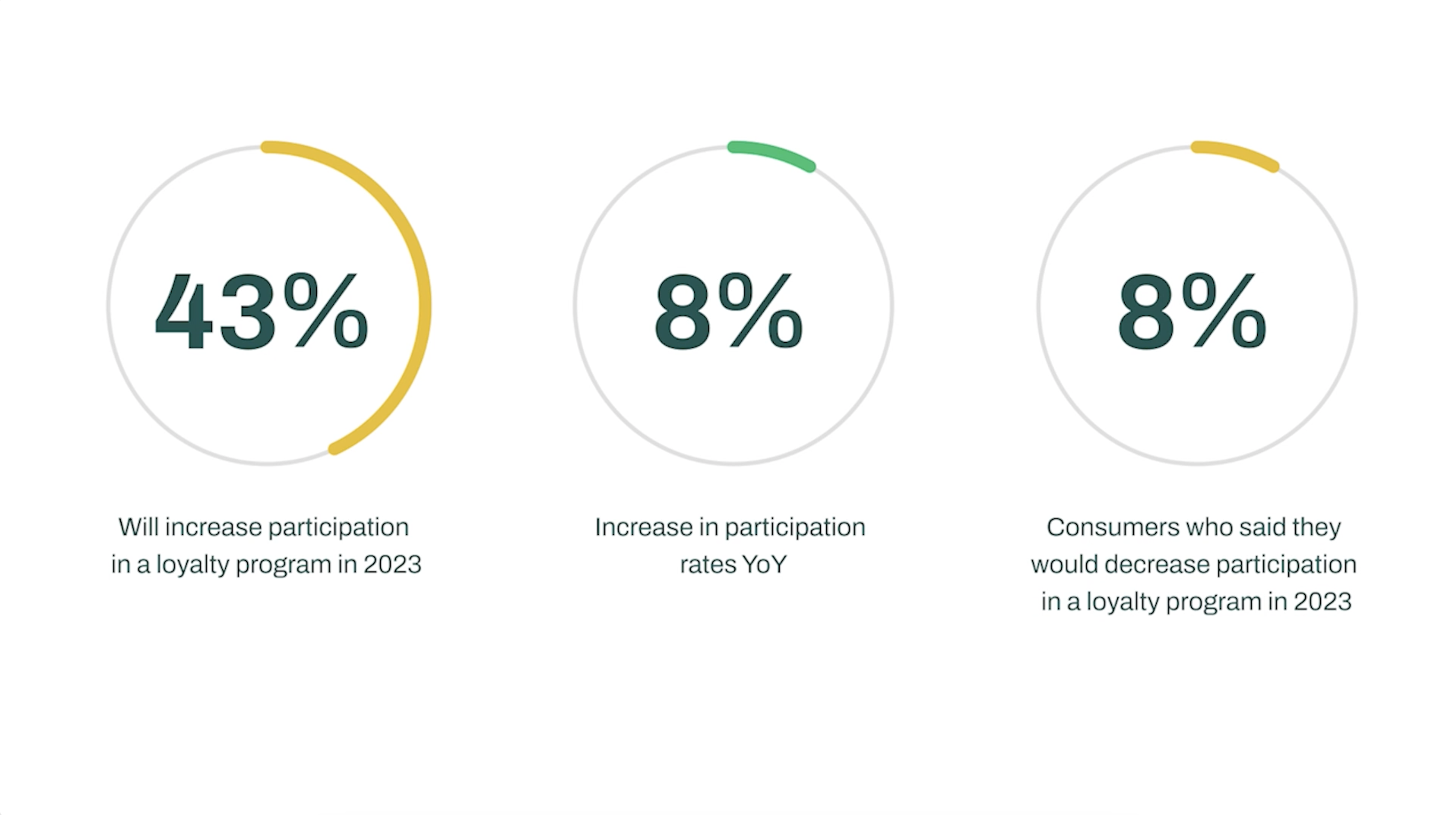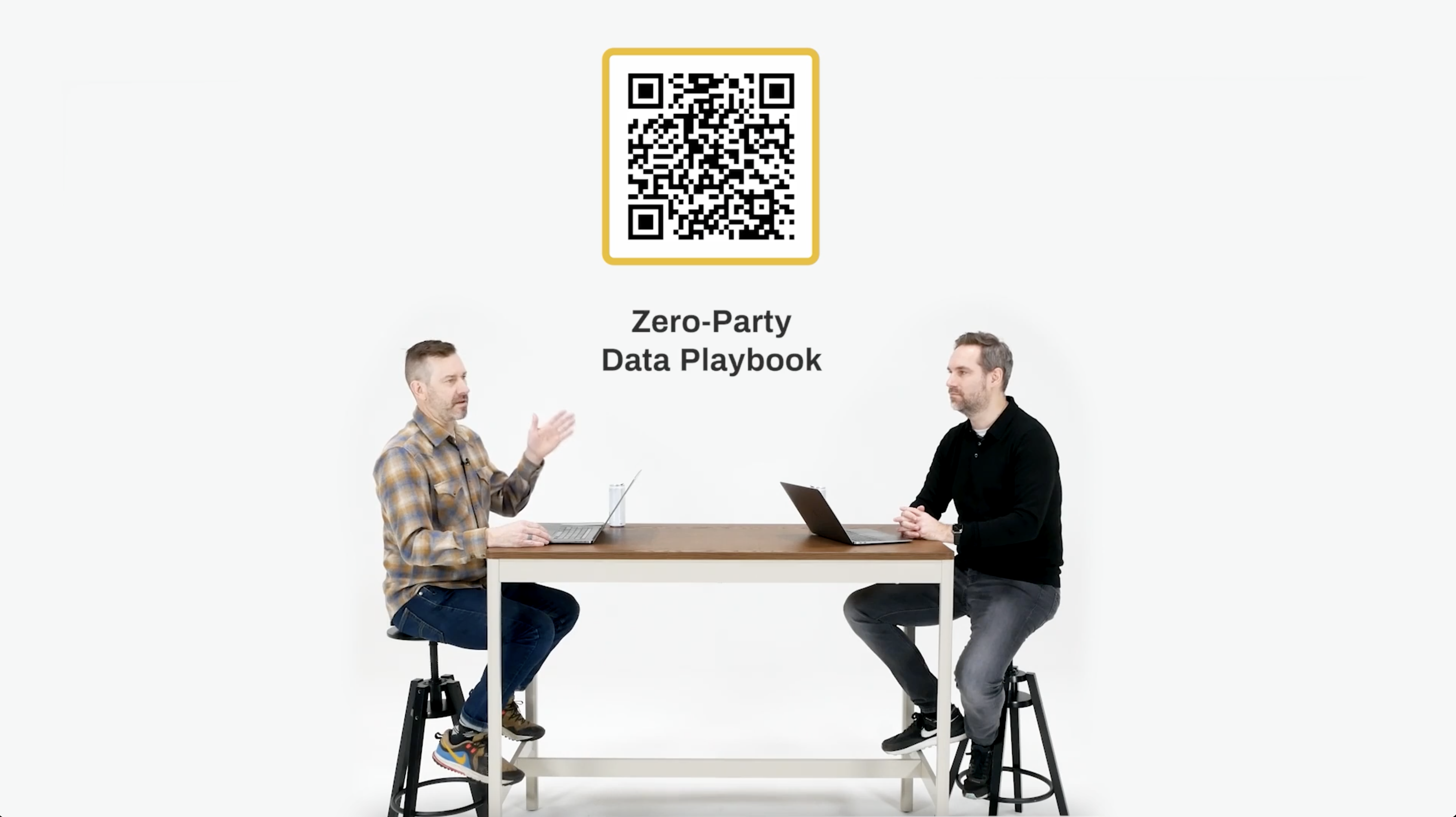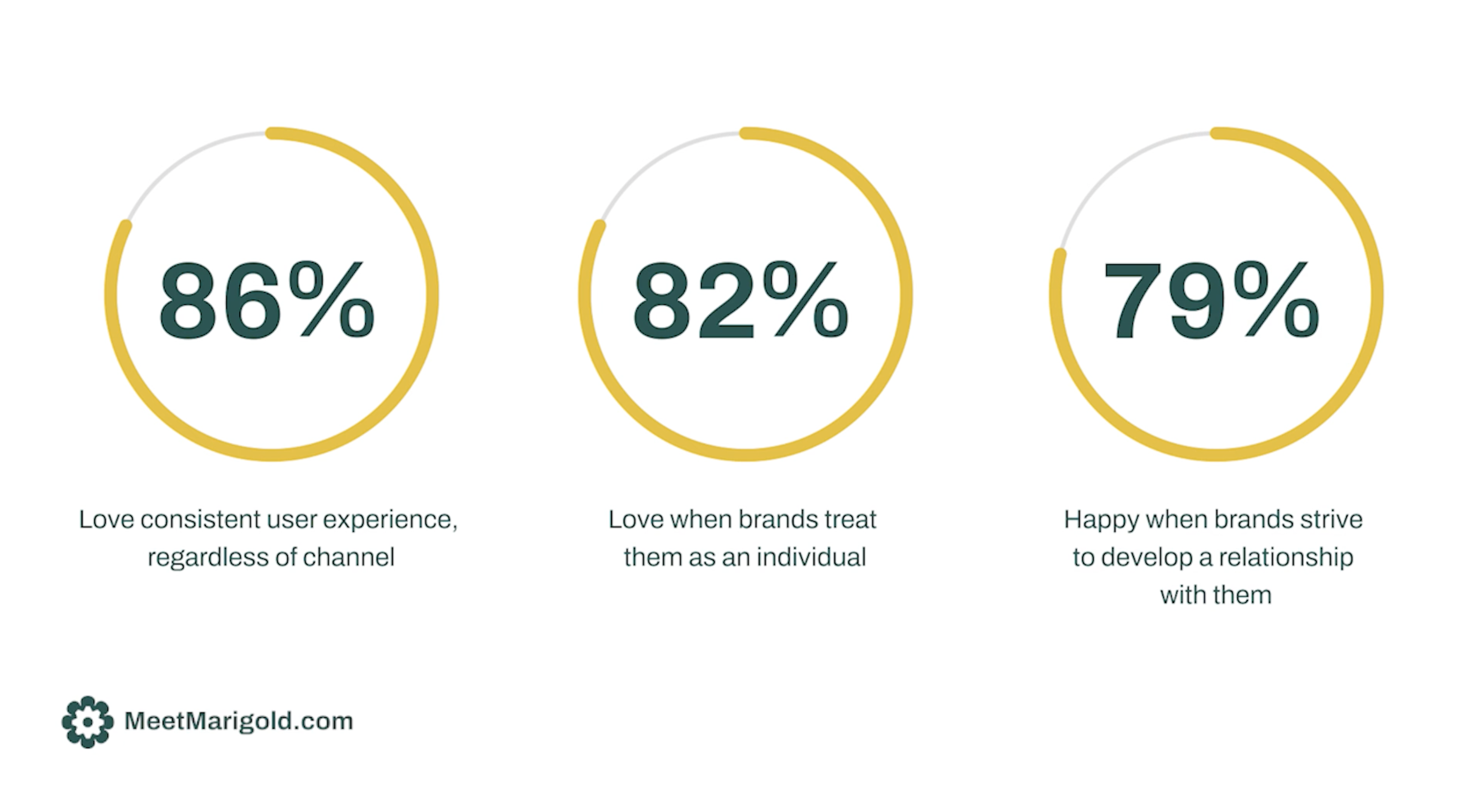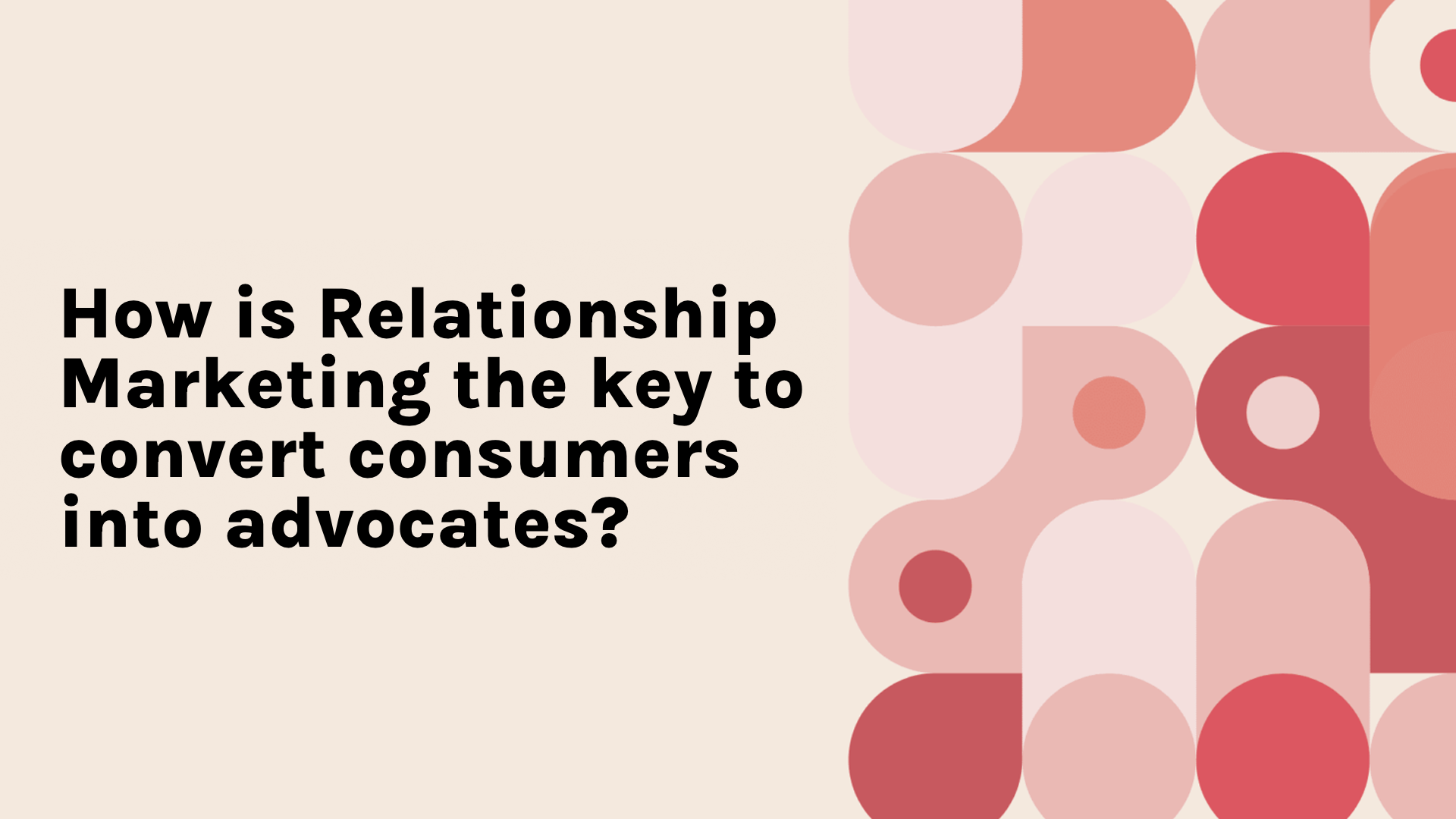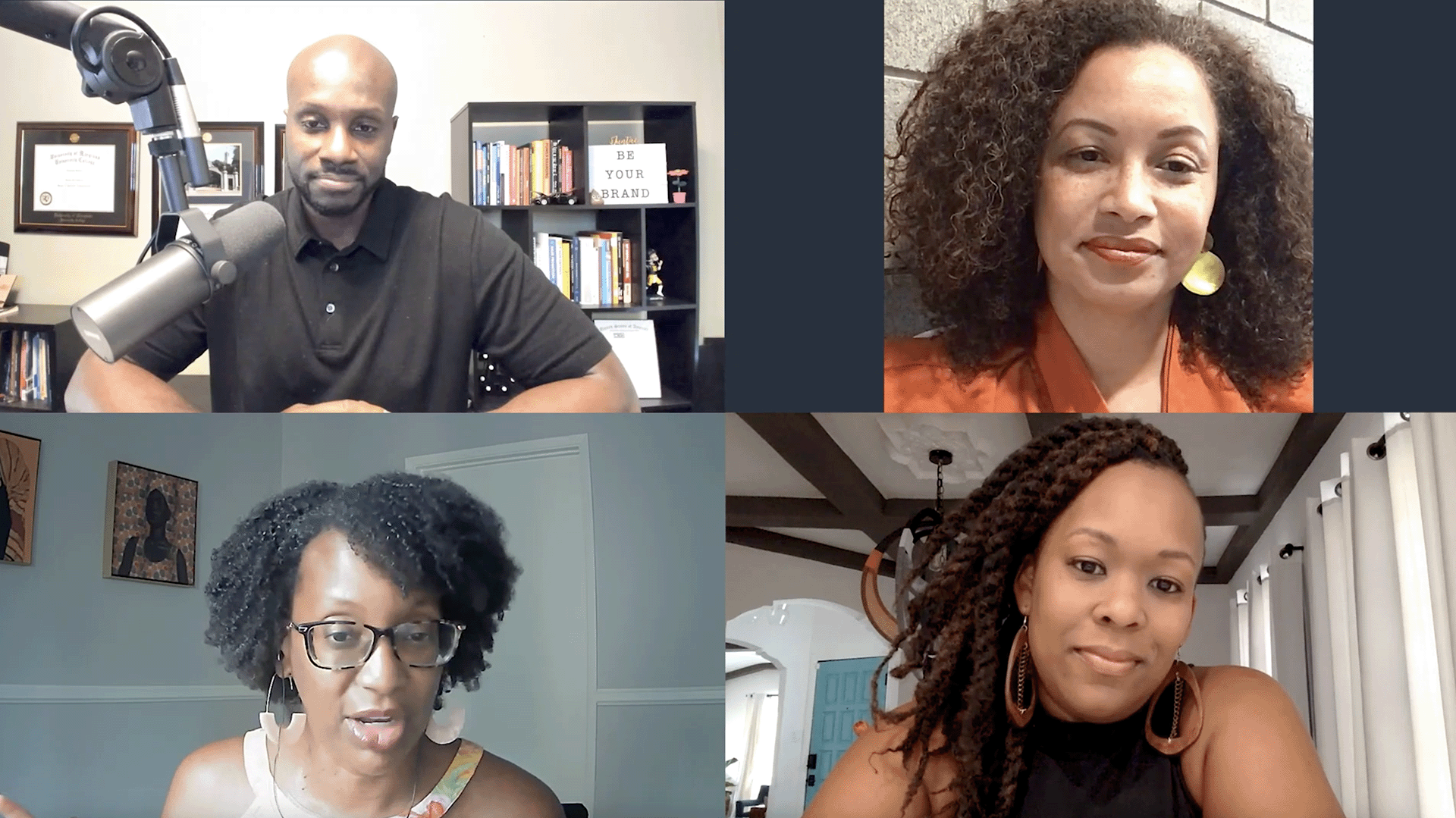Where Does Your Brand Stand: The Top Metrics and KPIs in Customer Loyalty
- 0.5
- 1
- 1.25
- 1.5
- 1.75
- 2
Tim Glomb: Welcome, everyone. This is another great Signal session, and today I am going to be talking with my friend, Mark Johnson, the CEO of Loyalty 360. Mark, how are ya?
Mark Johnson: I'm doing well, Tim. I'm doing well. How are you?
Tim Glomb: I'm great, man. I've been traveling a lot trying to get this Signal session off the ground. We have a ton of sessions, but you and I have done this a lot of different times. I look forward to these as always. And today, we're going to be focusing on the state of customer loyalty. And in particular, a project you've been working on with all your great clients around the metrics behind loyalty. But first, before we dig into it, for people who don't know who Loyalty 360 is, you're the largest loyalty association on the planet. Can you give us a little bit about what Loyalty 360 is?
Mark Johnson: Yeah, absolutely. We are, as you mentioned, a trade association for customer loyalty. We run a couple different conferences a year. We meet with brands and with suppliers and partners and agencies like yourself, like Cheetah Digital, to understand the state of customer loyalty, where it is, where it's going, the challenge and opportunities that brands and the supplier partners are seeing within the market, because customer loyalty is now more important than ever before from a brand perspective. But also with the complexity, with the MarTech, with integration, with privacy and other challenges out there, it's becoming very difficult for brands to have a truly engaged audience and also how do you do that? Right? So we help bring best practices together from the brands and the suppliers to truly understand where customer loyalty is today.
Tim Glomb: Well look, I've been a long time fan of yours even before I got here via Cheetah Digital now at the greater CM Group. So I love your emails. If you're watching and you don't get their emails, go sign up, get on the mailing list. And we're a proud partner. This are last year's awards. I know we won some awards this September at your 2022 Expo, so I'm looking forward to those. But let's dig in. The state of customer loyalty, Mark, what are we going to cover here? And where do you want to start into this awesome report on the metrics brands should be thinking about in loyalty programs?
Mark Johnson: So I think an interesting place to start is looking at kind of where brands are around customer loyalty, what they see as the opportunities pertaining to customer loyalty. So we're going to go through some of these topics here, and we'll keep these brief. But I think one of the best places to start is a marketplace overview of what marketers, what brands are looking to do regarding customer loyalty and customer experience. There's a big opportunity to deliver on personalization. It's a challenge that brands have. We do a yearly survey around the challenges pertaining to customer loyalty, so delivering our personalization is very important to brands. So they need the right zero- party data that organizations like yourself do. They need to be able to action on that, right? There's a big challenge with regard to analytics and spend accountability, because as you know, add you different pieces of technology or you become more granular in your personalization effort, there's a cost to that, right? So how do you do it at scale, but more importantly, how you do it at scale that can lead to measurable change? There's still a big challenge in the organizations about how customer loyalty and customer experience is run. Is it split? Is it organized? And does it have the organizational focus, both short- term and long- term? Do they have organizational buy- in? Are they allowed to make mistakes? Are they allowed to make investments in different programs, technologies, or even ideas that could drive incremental customer loyalty? A huge challenge for brands these days is bringing on customers into the program. As you know, if you bring a customer onto a program and they don't get engaged early and often, they're going to become latent, right? They're going to lag. So if you're six months in, a year into a program and you have half of your file that's not engaged, that's a big challenge for brands to change that, right? And having engagement platforms like you have at Cheetah are very important. So bringing customers on is very important. And then, when you look at getting them on, you want to keep them, right? So having churn reduction, you want to keep that as minimal as possible again. But having the right technology, the right data points and the right reports and metrics is very important.
Tim Glomb: I totally agree. I totally agree. We call it the four stages of relationship marketing, right? Acquisition, you've got to acquire, engagement lives in the middle, retention, loyalty on the end. We have a ton of coverage in that in Signals this year and that's our real theme across it. But it's great to see things like this. You have access to all the brands. You can understand what the CMOs and these loyalty leaders are looking for. So I want to remind people they're actually going to get their hands on a version of this metric report that you created just for attending. So check your inbox. But no, this is great. You guys are the total source for this. So what else are we seeing brands struggle with in the measurement and metrics department?
Mark Johnson: Well, metrics are very challenging and a number of reasons, kind of these last two ideas. Being distinct for the program is very important. So if they have a program that may not be working, I know you've done this with a number of your restaurant clients, right? You've worked with them to make it more distinct, to make it more consistent with the brand, the brand promise. But that's a big challenge, right? And then, if you have a brand that has global operations, how do you make it consistent and simple to understand? So that can be a big challenge for brands. And a lot of times, as I mentioned, we'll talk about they just don't have the right metrics to do that.
Tim Glomb: Yeah. That is a struggle. It's one thing to say, " Hey, we need a loyalty program in our platform, et cetera." It's another thing to define what are your KPIs? What should you be tracking as a leader and making these investments?
Mark Johnson: You're absolutely right, and I think one of the things that we've talked about in the past is having kind of a roadmap for investments is very important. And these are some of the things that we've seen. Personalization is very important for brands. Having the right technology is a huge opportunity for our marketers. Having that right content that's personalized, that's relevant is a challenge. And then also, looking at different rewards strategies and brand partnerships and customer experience are kind of top investment focus for brands. I don't know if you are seeing some of the same things, but brands are looking at how they should spend and invest in their customer loyalty efforts.
Tim Glomb: Oh absolutely. Look, number one, personalization. You mentioned at the top, zero party data. Had a great sit down with Chris Muscutt, who's the head of MarTech over at Pepsi. And PepsiCo, they're giant. They have a ton of customer data, but now they're starting to say, " Okay. We can ask for psychographics, zero party data, to extend that journey and continue that, A) across all the brands in the Pepsi fold, right? Gatorade, Doritos, et cetera. But they're also trying to figure out, " What's the value of a given piece of data?" Like, " All right if I get Tim Glomb's email, that has a certain value. But if I ask him what's his favorite flavor or does he love music or sports, where should we invest and put our brand to meet Tim's lifestyle? What's the value of that? Is it $1.00? It $.10? Is it $ 10?" So that's one thing. And then, you mentioned technology and you had gamification up there, our experiences platform. That's one of the reasons we feel so good about our loyalty offering is that we have this awesome engaging platform, spin to wins, couponing, video contests, upload your photo. There's like 80 different libraries of digital engagements. So now when you get people into your loyalty program, you've got these cool differentiated things, which Pepsi does very well. Doritos did a massive sweepstakes campaign that got their highest level loyalty people back in and re- engage and learn more about them. So investments, big thing. We'd love to talk to anybody who wants to know or needs advice on where do you invest from a MarTech standpoint.
Mark Johnson: And when you look at some of the opportunities, one of the things we do is we ask brands what they are currently getting from their customer loyalty strategists and their customer loyalty technology or what they need. And by far and away, reporting analytics are the number one thing they need help with, they want more of, right? They're kind of locked into what they have. They're getting their loyalty in CX strategy. They have some customer relationship management pieces, but lastly, there's a points engine. But that dearth of depth in regard to analytics and reporting to tie back to some of the things you talked about is very important. And there is a dissonance, right? There is a disconnect of, " What is that data worth? How do I make it actionable? How do I have the technology and the platform to do that?" And that's where we see just kind of a lack of insight as to those metrics and where they should be investing.
Tim Glomb: No, you're right. And look, certain platforms have certain metrics and some are missing some metrics. And to be honest, there are more metrics we're constantly focused on in our particular platform. Can we add a metric for this? Can we collect this type of information and give that feedback uphill? I'm proud to say I just hired a researcher so that we can create content around our loyalty programs and with our partners, our brand clients to say, " Hey, we're seeing this trend. We want to get ahead of that from a thought leadership's perspective." But yes, metrics need to grow. You need to get a lot of different ones. And even like the points engine, right? A dollar equals a point, whatever it might be. How do you measure emotional loyalty? And you and I have talked before, consumers, I think it's like 60% or so say, " I just want to be recognized by a brand." Right? " My points for transactions, yes they're important to me. I get more miles, I get whatever. But hey, I went into your store, I opened your app, I went to your website, reward me for that. Recognize me." How can you measure that? How can that lead or foretell and predict transactional behavior? So we're all into that. That's why Cheetah spent 25% of its revenue in R& D to keep bringing those types of trends and metrics to light. So I like that you're pushing companies like ours to keep continuing to build more available metrics.
Mark Johnson: Yeah. And I think too, as you know, you have to be very discreet with the metric when a brand gives it to you. So when a Fortune 500 brand gives us some data points they have, we can't share them, right? So a lot of people will sell that off and maybe do something with it. But we don't do that, right? We don't share it, we aggregate it as much as we can. And this study, we're to continue going through it into the spring. But it is a great opportunity, because we listened to the brands. We had over 110 different metrics in place after we talked about 30 different brands over the summer, and then we've kind of whittled it down to these top 50. And this top 50, were going to have actionable numbers against them so brands can benchmark. But getting that from the brands can be a challenge because you have to be a steward of the data. They have to be someone you trust. You can have NDAs in place and you can have kind of a relationship, but some brands still won't give it to you, which we found is interesting, right? They would tell us everything that they're tracking but when you go to get the actual numbers, there's a little bit of reticence, a hesitancy to share some of that.
Tim Glomb: No, I totally get that. And not only that, I think people, some brands have a loyalty platform but they might not have the right people who aren't either dissecting or interpreting the data that they have in the right way, or not even looking for certain data that they could get. There's a great session I did at Signals this year with an old friend of mine, Katie Knight, who's the Chief Revenue Officer at TGI Fridays. But she stood up loyalty and engagement platforms in the restaurant space, particularly for years, for well over a decade. And we talk about the people you need behind the MarTechs so that they can actually find the right things. We also talk about, which I know you have up on this slide, subscription. I start rattling her cage around, " Are you going to start offering subscriptions? What would the metrics look like that?" It's not just revenue, it's all kinds of engagement and things. So a lot of different opportunities out there right now in the loyalty space for brands of all sizes, in all industries.
Mark Johnson: No, you're absolutely right. And I think, one, we did a survey earlier this year and understanding the different technologies or opportunities brands would like to learn more about, right? And having that right resource, having the right team is very important. Gamification is a big one. It has been gone the last couple years. It's come back. Partnership programs are a huge area of interest for brands, especially with privacy concerns in four states now and growing, how do you get a partnership program that'll truly work? Right? But that can be a challenge, too, from brand alignment, from potentially a coffee company to an airline, having the right community that you can get more and more data from, because people are moving away from third- party data. They're still very dependent on transactional or first- party data. But it's that zero- party data and that ancillary data, especially from a community they can leverage. So I think there's a huge opportunity to do that. Then as you mentioned, premium subscription is important, but subscription can be different, too. I was actually talking with a Fortune 500 brand today, and their subscription program is different than their loyalty program because the subscription, sometimes they won't say it, right? You want to kind of set it and forget it. You want to get them in, get that recurring revenue. You may not want them necessarily to be as involved with the program as you should be in a loyalty program. So there can be kind of a dissonance between those two as well, and they need to be structured accordingly.
Tim Glomb: Yeah, that's interesting. If you gave away$ 5. 99 all- you- can- eat tacos every month and someone was in there every day, you're you're going to lose money. So I get it, the difference between engagement and subscription, engagement and loyalty. But the gamification, we've been strong in this for years. Our experiences platform, that's really what it was built for. And I don't want people to think of gamification as, " Okay cool, it's like a pad on the head for the consumer." Gamification can provide that zero- party data as part of the engagement entertainment education that you're providing for a customer or even a prospect to bring them in as a customer, that can also provide psychographic insights that you don't know about that particular person. So when you start putting that in your record for that profile and then as they build their loyalty, you're ahead of the game, you know them as a person. Cool. What else do we have to talk about?
Mark Johnson: Yeah. So when we looked at the brands, we asked them, " What metrics are important to you?" So customer engagement metrics, sales metrics, customer satisfaction, customer value and engagement conversion are kind of big ones, so having someone who may be in the program and kind of getting them more actively engaged. But these also kind of are more difficult to measure as you go through them. So everyone does a pretty good job with regard to short- term metrics. It's when you get to longer- term metrics, and I think you mentioned it earlier, what is the value of a piece of data in the Pepsi example? Right? So having something like an NPS or a CSAT score, that's a snapshot and time metric, and how do brands action that? Right? So Tim could have flown on Delta or American or Southwest and had a horrible experience here. You get off the plane, you're upset, and they happen to catch you then. Well, that score may not be indicative of your true engagement with the brand or the value that that brand has to you as well. So brands tend to measure more of that snapshot in time versus customer lifetime value, longer- term profitability, which gets to be a big challenge.
Tim Glomb: That could not be a more timely example for me. I just got off a plane last night. I did 36 flights, I was looking last night, 36 flights to produce Signals. Only one of them was a total disaster. I don't think it was their fault, but they did, they sent me a survey. " How did we do?" And you're right. If I had said, " Hey. This was off course, the plane wasn't in the order, blah blah blah blah blah," they would've gotten a bad NPS for me. However, I also looked at my app last night as I landed, I have 533, 000 lifetime miles with that company. So I am clearly am fiercely loyal to them. So that's a good call. You've got to look at all kinds of metrics at different time, and look at that long- term customer lifetime value and, " Is Tim a champion?" And I am a champion for the airline that I fly constantly.
Mark Johnson: When you look at some of the other opportunities as well, is with the complexity that's so inherent in the technology landscape right now, and I think you touched on it and people are looking at gamification, they're looking at zero- party data, they're looking at experiences. But a lot of times, the brands may have a customer experience, customer loyalty, or a CDP potentially that they're in a long- term agreement with, and they may have been sold something that isn't actually the platform they bought, right? So that creates a big challenge as well. It creates a lot of dissonance not only within the marketing of the customer loyalty to the organization, but also up to the CIO and CFO when they've been promised X, Y or Z and it doesn't work. So brands are looking for objective technology metrics, technology assessments and then competitive benchmarks. And that can be a big challenge as well, too, because some of the leading analysts don't have the brand perspective, right? They don't get to talk to your clients in kind of an objective manner on a timely basis. So they don't understand the technology as well, and I think that's a big challenge as well. Integration is some of the things that you have with your experiences platform and being able to either do that modularly or as a holistic offering is very important to marketers.
Tim Glomb: No, you're right. And look, if anybody watching right now is shaking their head going, " Yes, we got the bait and switch" or" We bought something, sales team said it could do X, but it actually can only do Y," come talk to us. You can bolt experiences onto your two, three- year CDP that you have right now and you can start to win, start to collect that ever important zero- party data, so that when you're ready to pivot or move platform or re- platform, you're ahead of the game. So just call us, talk to us. We've brought a bunch of prospects over and turned them into clients for that reason, so yeah. All right. What else have we got?
Mark Johnson: Yeah. So the first survey question we asked brands, " Do you think there's a need for more defined metrics?" And 67% said yes, 15% said no. This is organization- based, right? But then 18% said not sure. And that's a little bit interesting to me, and it gets back to that, and I think you mentioned earlier, having the right people, the example of Fridays right? So when she looks at her organization, does she have the right people to get and glean the metrics out of it? Is she building the right team? And brands really struggle, what we see going back to a couple years ago we did a survey, brands don't feel they have the organizational bench strength to run the programs they need to. So it starts with not only saying the technology, as we mentioned before, that can be confusing how it's sold in, but if you don't understand the technology, you don't understand what the technology can do, and many brands really struggle with that, you may not be sure of what metrics that you need.
Tim Glomb: Yeah. When I was a consultant before I joined here at Cheetah in 2020, I was doing a lot of that. I was trying to help build teams, " Hey, if you're going to invest in this particular technology, whether it's a CDPC or a loyalty platform, whatever, you have to have this skill set in- house." And having your vendors, like a Cheetah, for loyalty in particular or anything in the CM group, having a strong services team, a strategic services team that can help get you there as you onboard and ramp that skill set in- house is critical. So again, give us a call if you're shaking your head going, " Yeah, we have those issues."
Mark Johnson: No, I think this is a very salient point, too, because one of the things that we saw, we've seen our last couple of years, is that there was a big push to bring all of it in- house at one point, right? Everyone wanted a center of excellence, they wanted to develop their own customer loyalty CRM, CDP technologies. But at the end of the day, going through Covid, everyone is resource constrained right now, so they can't keep up, they don't have the resources and they do have a resource team. They're fighting with the email team or the mobile team or whomever to get prioritization of resource. And that can be a big challenge. So now you're seeing almost a dichotomy, people are like, " Well, we need to work with a Cheetah. We need to work with an agency or a strategist that can help us because we just don't have the resources in- house. Or if we do, we're constantly fighting with others to make sure they're allocated."
Tim Glomb: Yep. Yep. Now hey, we feel that internally here at the CM Group at times as well, so empathy all around for that.
Mark Johnson: Exactly. One of the first questions we asked, so most brands have a good baseline of customer understanding when it comes to those short- term matches, right? But one of the things that you see that kind of stand out from a customer retention perspective, we asked, " Was it a high value metric? Is it a secondary metric? Or is a metric that you're interested in tracking, not interested in tracking, or do you not understand what the question meant?" So you'll see in some of these that from a customer retention perspective, every brand should be tracking right? But 13% are still interested in their tracking and they have a customer loyalty program, but they're not tracking customer retention.
Tim Glomb: Wow.
Mark Johnson: To me, that seems kind of interesting.
Tim Glomb: Yeah. It seems like a disconnect, seems like investing in something but not doing it the right way. I'm not going to go too deep on that one, but clearly, room for improvement.
Mark Johnson: Yeah, absolutely. And then even at 7% happens as a secondary metric, it should be an operable metric, it should be the most important metric they have. But it's just interesting again, when you start to dive down that they don't exist.
Tim Glomb: Yep. No, that's alarming. That's alarming.
Mark Johnson: Brands have a good understanding, a kind of baseline understanding of their customers, right? They look at repeat purchase rate, they understand program enrollment rate, they understand program growth rates, and it's either a high value metric or secondary metric that they're tracking, or if they don't have it, there's an interest in tracking, which is good. And I think that again really shows that these short- term metrics brands have, they look at customer retention, program participation. The customer retention one, I said, that's kind of a challenge we mentioned earlier. But the program participation gets to be a little bit more dicey, right? You have some that say they're not interested and they're not tracking and they're not sure if they want to track. They need some clarification on what it means. That's almost a quarter of it. So as the metrics become more challenging long- term, it gets to be kind of a challenge.
Tim Glomb: Yeah. And look, we know we talked to Vans last year, Vans, they know, because they track this stuff really, really well. They know that over 60% of their North American direct- to- consumer business comes from a person in their loyalty program. So if you are not tracking, you don't really know where your revenue is coming from. You don't know if it's coming from loyal people, if it's just coming from a guest on the web. So you got to start tracking these things. You got to have a platform that can track this and surfaces this stuff up so you can stay on track.
Mark Johnson: Yeah. And I think to that point, when you look at some of the other understandings they have is they understand when a loyalty member are the percentage of transactions, right? So if they have a hundred transactions in the store, they can track that five of them had identified a card, and they can then track that back to sales. So that's something they do very well. So understanding it's a high value metric or kind of a secondary metric with regard to transactions and sales, they're very important. But then, when you look at kind of the cost per point, and that's very important as you know, if you don't understand the different technology you have that go into the reward, are you allocating FTE's? Are you allocating the cost of the product? So many people track their customer loyalty program as just the cost of the program itself. They're not looking at FTEs, how many people staffed, again the cost of the agreement. So you look at cost per point, it's a high value metric in about a third of them, right? It becomes a metric that they're tracking but they don't understand necessarily, and there's not a high level of confidence it's the right metric and then all third that have an interest in tracking it or they don't understand enough to track it. So I think there's a great opportunity to better understand cost of the program because ROI is becoming more important.
Tim Glomb: Oh absolutely. Again, Katie Knight, CRO at TGI Fridays, she's a CRO. She cares about the numbers. She wants to know that there is an ROI, not just, " We're paying for X and getting X and back in return." But also, if you're worried about cost of your program, there are really lightweight, low cost ways to reward your loyalty customers. We saw in our Consumer Trends Index, year- over- year it increases. People would just like early access to products. They would like exclusive content on products. These are simple things that are not a high cost. You don't have to give away a free pizza with every 10th sold. So start thinking about other ways you can reward people that are lower cost when you can track those metrics.
Mark Johnson: Yeah, absolutely. You mentioned, as they become more complex, there's an opportunity to better understand costs. So program ROI, it's usually more programmatic kind of short- term metrics. They're not looking at the longer- term, the reward value, the breakage, some of the opportunities there, how it breaks, how do you allocate that? Because brands want to get the liability after the accounting change a few years back. They want to get that off the books, turning into revenue, because you can't always actualize that in the short term. So I think there's a great opportunity to look at some of the costs, and in there is a huge opportunity to look at a more holistic understanding of the customer. And I think that's where a platform like you does very well. So what is my engagement by channel? What is my channel preference? Are they involved in the community? What is the social engagement that this customer has? Because that data point can be very important, especially if you have the right zero- party data, because you know what's driving behavior if you can action on it. So I think there is a pretty good opportunity here to do this. If you look at engagement by channel and channel preference and social engagement, it's something that brands are either interested in tracking or they're not necessarily tracking right now, so there's a great opportunity here.
Tim Glomb: Totally agree. Mark, look, this is great. And I'm going to remind everyone watching you're going to get a copy of this report. It might be a little different than what you're seeing here on screen, but you're going to get it. You guys cover a ton. You said like 50 or so metrics. We have two minutes left. How do we wrap this up? How do we summarize the value of this report and what marketers should be thinking about?
Mark Johnson: Well, I think one of the most interesting things is how do you recognize your elite? How do you recognize your customer loyalty programs? And I think there's, if you simplify a thing, just do one thing, is saying thank you. And I think you've mentioned a number of times I've spoken with you. So if you have a million miles on an airline, come up and saying thank you. Maybe they didn't get upgraded right this second. This thing of saying thank you and telling them being part of the program, telling them being part of the community. There are so many opportunities to do that, and recognizing their elite customers, it's something that brands aren't doing and it's a high value opportunity, it's a low cost opportunity, and they don't do it, just saying thank you. Because they're so focused on getting everything right, everything perfect. " What did I say? Was it right? Was it not?" Just enable your frontline CSR, your person at the call center or whomever, just to say thank you. "Thank you for being part of the program." Because most brands really struggle with recognized their elite customer, then that's something they can do that's very simple.
Tim Glomb: You're truly right, and you should go watch the TGI Friday session. Katie Knight and I talk about that. And Mark again, timely, 36 flights for Signals. I got five handwritten notes on business cards from the pilots on some of those flights. That right there goes a long way. And American Airlines, we have another great session in the past, a video on demand, how they identified their highest value customers, gave them a great personalized experience, asked some questions, followed with instant personalized emails. And they had over 84% conversion rate on that survey and they had a 50% plus open rate and they lifted per head revenue. So when you do it, it works. Recognition is great. Mark, we've got to sum it up. We've got 60 seconds. What's next at Loyalty 360? What should a brand do right now if they're not a partner or a member? Join? Go to an event?
Mark Johnson: They should definitely sign Up. We have a number of great kind of engagement opportunities. We do a lot of brand facilitation, introducing brands. We just have open discussions around customer loyalty, where it is, where it's not. It's brand only. We obviously have great partners like yourself, but it's a secure community and growing, and our next conference will be in May of 2023.
Tim Glomb: Great. You've got to get over there. Loyalty 360, it's dot net, correct?
Mark Johnson: Yeah. Dot organization, dot com, either one. Yes.
Tim Glomb: Okay. Got it. You got them all covered then. And look, if you want to talk to a Loyalty 360 award- winning platform provides awesome technology and services, you're here. You're on our website. Come check us out. Mark, as always, I love talking to you. Thanks for putting this together. I can't wait to see the final report. You and I are going to be doing a lot of content all year round. So everybody, you can come back, go there and find our content, come to see it with us. Mark, let's do this again soon.
Mark Johnson: All right. I look forward to talking to you again soon as always, Tim.
Tim Glomb: All right. See you, everybody.
Mark Johnson: Thank you, everyone.
DESCRIPTION
As the importance of customer loyalty continues to grow within organizations, the need to have a consistent set of metrics is more important than ever before. Over the last 8 months, Loyalty360 has conducted qualitative interviews with its brand and supplier members, gathering insights on each organization’s metrics, dashboards, and benchmarks. Through these interviews, Loyalty360 has come to understand how brands define these metrics, which ones they are using, the ones that are most important, and details on the metrics marketers would like to have, but don’t have the ability to access.
After an initial interview process, Loyalty360 confidentially surveyed 250+ brands regarding their own metrics, creating the first-ever benchmarking study for brands within and across industries. During this session, Loyalty360 will share its key findings and how the metrics can be leveraged and enhanced going forward.
Today's Guests

Mark Johnson



